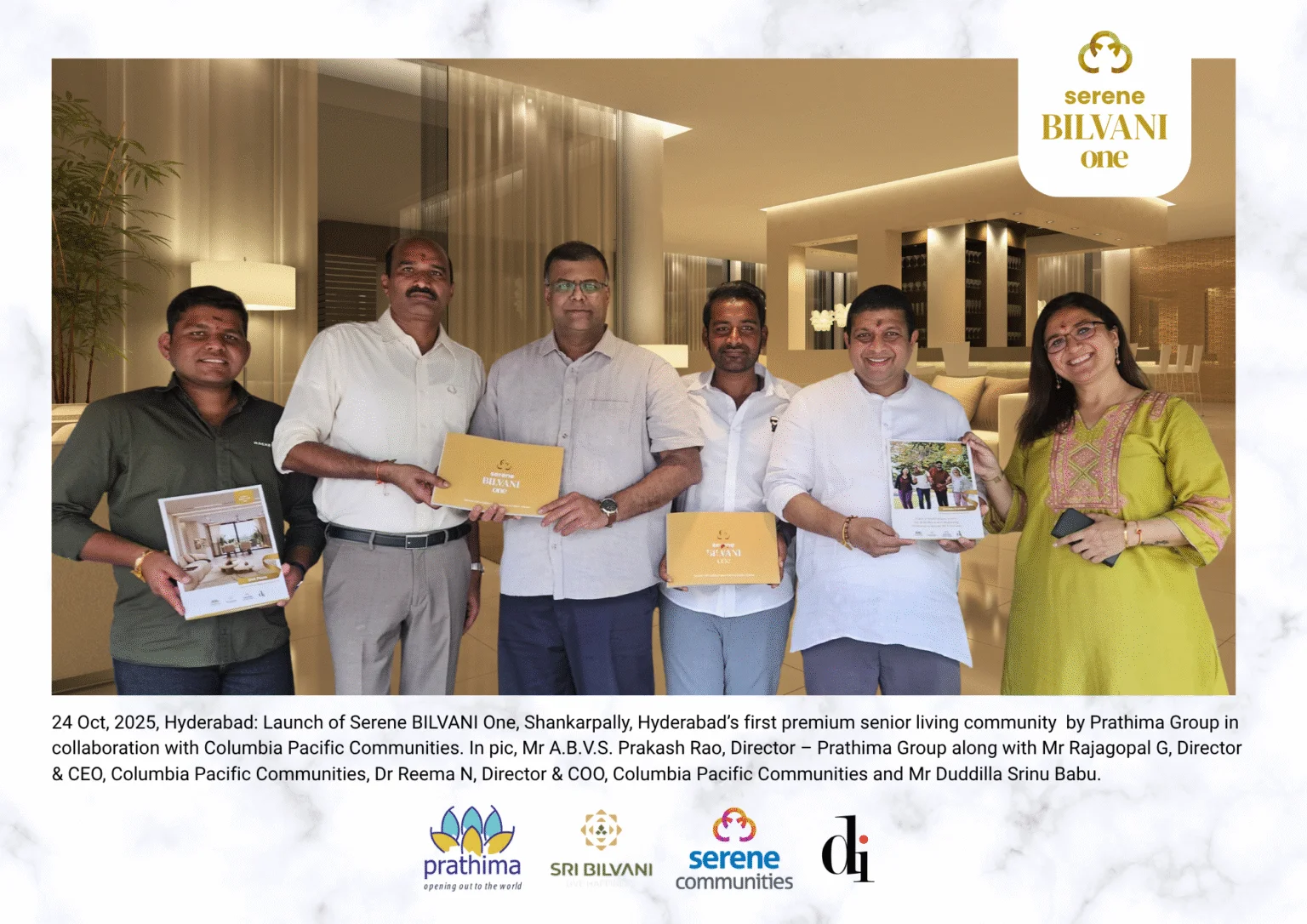Hyderabad, October 27, 2025: Serene Communities by Columbia Pacific has announced a strategic partnership with Prathima Group to develop two senior living projects in Hyderabad, marking its formal entry into Telangana. This partnership, representing a INR 400 crore investment in Hyderabad, brings together the international expertise of Serene Communities and the development excellence of Prathima Group. The first project under this partnership — Serene BILVANI One — has received RERA approval and is being launched in Shankarpally, Hyderabad’s green, low-density suburb. Serene BILVANI One is Hyderabad’s first premium senior living community built around opulence, purposeful design, and a lifestyle that enables seniors to live independently with dignity, comfort, and joy. Designed on the principles of positive ageing, the project features thoughtfully planned homes, senior-friendly architecture, rich common amenities, curated hospitality services, and a community environment that promotes activity, connection, and wellbeing. Supporting this environment is an integrated care layer — with clinical oversight by KITES Senior Care and preventive wellness technology enabled through SeniorShield — making it one of the most comprehensive senior living offerings in India. Located in Shankarpally, Hyderabad’s ‘Green Zone’, the project offers the perfect blend of serenity and accessibility — 7 minutes from the railway station, under an hour from the airport, and within easy reach of Outer Ring Road, Telapur, and HITEC City. The RERA-approved project (TS RERA No. P02400007448) comprises 265 residences across 2 & 3 BHK homes (1,025–1,700 sq. ft.), all fully Vastu-compliant and priced from INR 60 lakh onwards. Developed by Sri BILVANI HOMES LLP under license from Prathima Group, designed by Clark Lloyd Architects, the project showcases elegant architecture, barrier-free accessibility, and thoughtful design built around senior wellbeing. Serene BILVANI One brings together thoughtful, senior-focused amenities designed to promote active, independent, and healthy living. The community features a senior-friendly gym, swimming pool, spa, and physiotherapy centre, supported by a 24×7 health and wellness centre for continuous medical care. Expansive therapy gardens, walking and cycling tracks, and landscaped open spaces encourage movement and mindfulness, while curated dining and recreation areas foster social connection and community life. Rajagopal G., Co-Founder, Director & Group CEO – Serene Communities by Columbia Pacific, said “We’re bringing something revolutionary to Hyderabad — a first-of-its-kind senior living community that unites independent living, clinical care, and connected wellness technology into one integrated experience. Serene BILVANI One goes beyond housing; it’s a holistic ecosystem designed for positive ageing and total wellbeing. We’re proud and excited to partner with Prathima Group — one of the most credible and respected builders in Telangana — whose development expertise and trust complement our mission to redefine senior living in India.” A.B.V.S. Prakash Rao, Director – Prathima Group, added “At Prathima Group, we have always stood for quality, reliability, and innovation. Partnering with Serene Communities allows us to bring Hyderabad a global-standard senior living experience — one that combines care, comfort, and luxury, backed by the credibility and commitment both our brands share.” Serene Communities by Columbia Pacific, the senior living vertical of LifeBridge Group, currently operates 10 senior living communities across India, managing over 1,700 residential units and about 2,400 seniors under care, with 13 ongoing projects across Bengaluru, Chennai, Mysuru, Cochin, Pune and now Hyderabad.
Continue reading “Serene Communities Announces ₹400 Crore Investment to Bring Integrated Senior Living to Hyderabad”NEWS of Columbia Pacific Communities
Serene Communities, Prathima Group launch senior living in Hyderabad
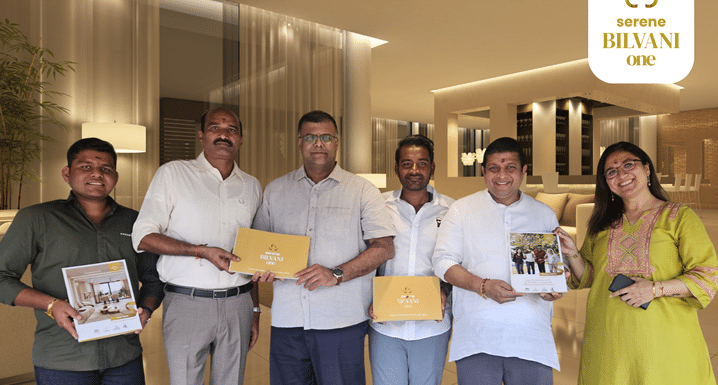
Serene Communities by Columbia Pacific has formed a partnership with Prathima Group to develop two senior living projects in Hyderabad, marking its formal entry into Telangana. This partnership, representing a Rs 400 crore investment in Hyderabad, brings together the international expertise of Serene Communities and the development excellence of Prathima Group. The first project under this partnership, Serene Bilvani One, has received RERA approval and is being launched in Shankarpally. Redefines senior living Serene Bilvani One is designed on the principles of positive ageing. The project features planned homes, senior-friendly architecture, amenities, curated hospitality services, and a community environment that promotes activity, connection, and wellbeing. Supporting this environment is an integrated care layer — with clinical oversight by KITES Senior Care and preventive wellness technology enabled through SeniorShield. Located in Shankarpally, Hyderabad’s green zone, the project offers serenity and accessibility — 7 minutes from the railway station, under an hour from the airport, and within easy reach of Outer Ring Road, Telapur, and HITEC City. The RERA-approved project comprises 265 residences across 2- & 3-BHK homes, all 100% Vastu-compliant and priced from Rs 60 lakh onwards. Developed by Sri Bilvani omes LLP under license from Prathima Group, designed by Clark Lloyd Architects, the project showcases elegant architecture, barrier-free accessibility, and thoughtful design built around senior wellbeing. The community features a senior-friendly gym, swimming pool, spa, and physiotherapy centre, supported by a 24×7 health and wellness centre for continuous medical care. Expansive therapy gardens, walking and cycling tracks, and landscaped open spaces encourage movement and mindfulness, while curated dining and recreation areas foster social connection and community life. Community living Rajagopal G, co-founder, director & group CEO, Serene Communities by Columbia Pacific, said “We go beyond housing; it’s a holistic ecosystem designed for positive ageing and total wellbeing. We’re happy to partner with Prathima Group whose development expertise and trust complement our mission to redefine senior living in India.” ABVS Prakash Rao, director, Prathima Group, said, “Partnering with Serene Communities allows us to bring Hyderabad a global-standard senior living experience — one that combines care, comfort, and luxury, backed by the credibility and commitment both our brands share.” Serene Communities by Columbia Pacific, the senior living vertical of LifeBridge Group, currently operates 10 senior living communities across India, managing over 1,700 residential units and about 2,400 seniors under care, with 13 ongoing projects across Bengaluru, Chennai, Mysuru, Cochin, Pune and now Hyderabad.
Continue reading “Serene Communities, Prathima Group launch senior living in Hyderabad”Serene Communities partnter with Prathima Group to develop two senior living projects in Hyderabad with Rs 400 Cr investment

Hyderabad, Oct 27 (UNI) Serene Communities by Columbia Pacific, India’s largest and most trusted senior living operator, today announced a strategic partnership with Prathima Group to develop two senior living projects in Hyderabad, marking its formal entry into Telangana. This partnership, representing a Rs 400 crore investment in Hyderabad, brings together the international expertise of Serene Communities and the development excellence of Prathima Group, one of the most reputed and credible builders in the state, the company said in a release here. The first project under this partnership – Serene BILVANI One – has received RERA approval and is being launched in Shankarpally, Hyderabad’s green, low-density suburb while the second project will be announced soon. Serene BILVANI One is Hyderabad’s first premium senior living community built around opulence, purposeful design, and a lifestyle that enables seniors to live independently with dignity, comfort, and joy. Designed on the principles of positive ageing, the project features thoughtfully planned homes, senior-friendly architecture, rich common amenities, curated hospitality services, and a community environment that promotes activity, connection, and wellbeing. The RERA-approved project comprises 265 residences across 2 & 3 BHK homes (1,025-1,700 sq. ft.), all 100 percent Vastu-compliant and priced from Rs 60 lakh onwards. Developed by Sri BILVANI HOMES LLP under license from Prathima Group, designed by Clark Lloyd Architects, the project showcases elegant architecture, barrier-free accessibility, and thoughtful design built around senior wellbeing. Rajagopal G., Co-Founder, Director & Group CEO – Serene Communities by Columbia Pacific, said “We’re bringing something revolutionary to Hyderabad — a first-of-its-kind senior living community that unites independent living, clinical care, and connected wellness technology into one integrated experience. Serene BILVANI One goes beyond housing; it’s a holistic ecosystem designed for positive ageing and total wellbeing. We’re proud and excited to partner with Prathima Group – one of the most credible and respected builders in Telangana”. A.B.V.S. Prakash Rao, Director – Prathima Group, said “Partnering with Serene Communities allows us to bring Hyderabad a global-standard senior living experience – one that combines care, comfort, and luxury, backed by the credibility and commitment both our brands share.” Serene Communities by Columbia Pacific, the senior living vertical of LifeBridge Group, currently operates 10 senior living communities across India, managing over 1,700 residential units and about 2,400 seniors under care, with 13 ongoing projects across Bengaluru, Chennai, Mysuru, Cochin, Pune and now Hyderabad. LifeBridge Group is India’s leading integrated senior care organization, backed by the Manipal Education & Medical Group (MEMG) family office, led by Dr. Ranjan Pai & Columbia Pacific Management, Seattle.
Continue reading “Serene Communities partnter with Prathima Group to develop two senior living projects in Hyderabad with Rs 400 Cr investment”Serene Communities, Prathima to develop senior living projects

Serene BILVANI One, one of the two projects, will be a premium senior living community project, which will include clinical care support from KITES Senior Care. Bengaluru-based Serene Communities by Columbia Pacific joined hands with Prathima Group to develop two senior living projects in Hyderabad with an investment of ₹400 crore. Serene BILVANI One, one of the two projects, will be a premium senior living community project, which will include clinical care support from KITES Senior Care. The first project project has received RERA approval and is being launched in Shankarpally in Hyderabad. It will have 265 residential units 1,025–1,700 sq. ft, with prices beginning from ₹60 lakh. Serene Communities by Columbia Pacific, the senior living vertical of LifeBridge Group, currently operates 10 senior living communities in the country, managing over 1,700 residential units and about 2,400 seniors under care. “There are 13 ongoing projects in cities like Bengaluru, Chennai, Mysuru, Cochin and Pune,” a company statement said here on Monday.
Continue reading “Serene Communities, Prathima to develop senior living projects”New Senior Living Spaces in Hyderabad: A Rs 400 Crore Initiative
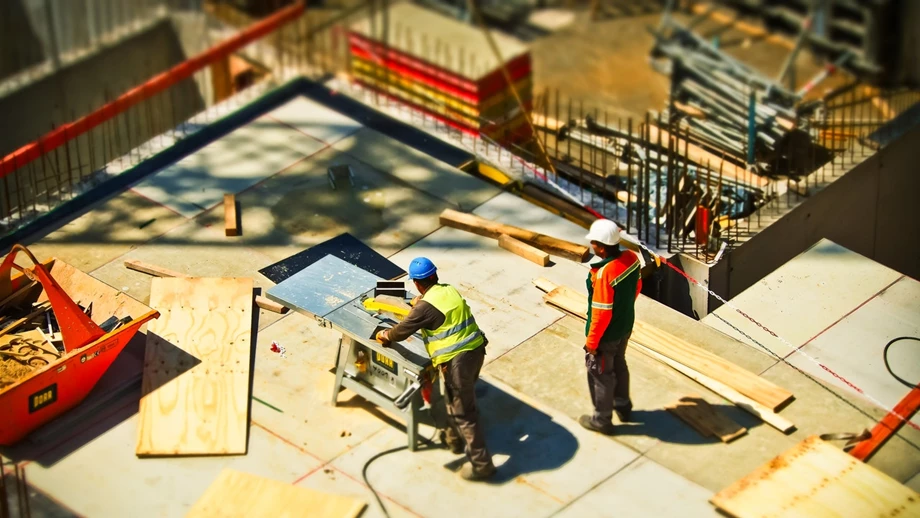
Serene Communities by Columbia Pacific partners with Prathima Group to develop two senior living projects in Hyderabad worth Rs 400 crore. The first, ‘Serene BILVANI One’, will offer 265 residences. As part of LifeBridge Group, they currently manage over 1,700 units and have 13 ongoing projects in India. Serene Communities by Columbia Pacific has announced a collaboration with Prathima Group to launch two senior living projects in Hyderabad, involving an estimated investment of Rs 400 crore. The first of these ventures, ‘Serene BILVANI One’, will be situated in Shankarpally, Hyderabad. This development will comprise 265 residences, with prices starting from Rs 60 lakh. As the senior living sector of LifeBridge Group, Serene Communities already oversees 10 communities across India, catering to over 2,400 seniors. They’ve expanded their footprint with 13 ongoing projects in various cities, including Hyderabad.
Continue reading “New Senior Living Spaces in Hyderabad: A Rs 400 Crore Initiative”Senior Living Projects in Hyderabad: Rs 400 Cr Invest

New Delhi, Oct 27 (PTI) Serene Communities by Columbia Pacific has partnered with Prathima Group to develop two housing projects for elderly people in Hyderabad with an investment of Rs 400 crore. In a statement on Monday, Serene Communities by Columbia Pacific said that the total investment is estimated at Rs 400 crore. The first project, ‘Serene BILVANI One’, is located in Shankarpally, Hyderabad and will have 265 residences, priced from Rs 60 lakh onwards. Serene Communities by Columbia Pacific, the senior living vertical of LifeBridge Group, currently operates 10 senior living communities across India, managing over 1,700 residential units and about 2,400 seniors under care. It has 13 ongoing projects across Bengaluru, Chennai, Mysuru, Cochin, Pune and now Hyderabad. LifeBridge Group, which is an integrated senior care organisation, is backed by the Manipal Education & Medical Group (MEMG) family office and Columbia Pacific Management, Seattle.
Continue reading “Senior Living Projects in Hyderabad: Rs 400 Cr Invest”Serene Communities, Prathima Group to invest Rs 400 cr on 2 senior living projects
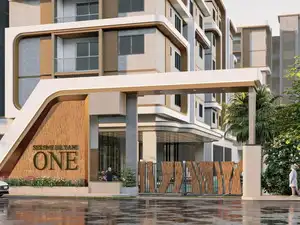
NEW DELHI: (Oct 27) Serene Communities by Columbia Pacific has partnered with Prathima Group to develop two housing projects for elderly people in Hyderabad with an investment of Rs 400 crore. In a statement on Monday, Serene Communities by Columbia Pacific said that the total investment is estimated at Rs 400 crore. The first project, ‘Serene BILVANI One’, is located in Shankarpally, Hyderabad and will have 265 residences, priced from Rs 60 lakh onwards.
Continue reading “Serene Communities, Prathima Group to invest Rs 400 cr on 2 senior living projects”Budget 2025 Expectations Live Updates: FM Sitharaman to present Union Budget 2025-26 tomorrow; Here’s what industry leaders expect from govt
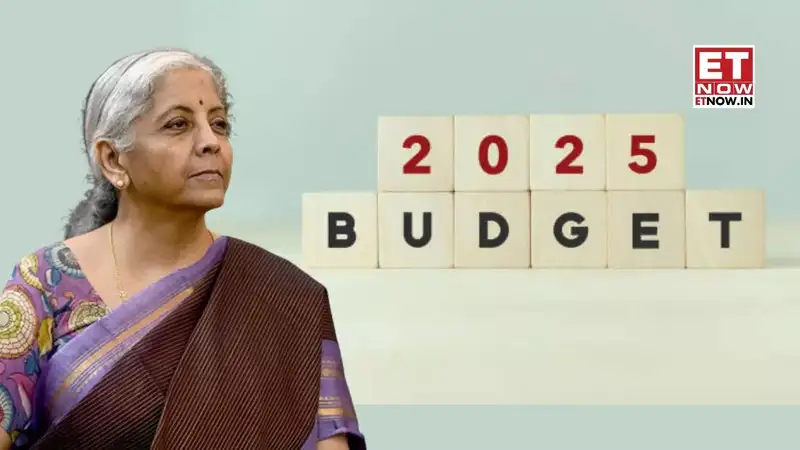
Budget 2025 Expectations Live Updates: FM Sitharaman to present Union Budget 2025-26 tomorrow; Here’s what industry leaders expect from govt Budget 2025 Expectations Live Updates: Union Budget 2025-26 is set to be presented by Finance Minister Nirmala Sitharaman on February 1 i.e. tomorrow. The first part of the Budget Session will have nine sittings from January 31 to February 13. The Parliament will meet again on March 10 to discuss the demands for grants of various ministries and complete the budgetary process. The session will conclude on April 4. The entire Budget Session will have 27 sittings. Ahead of the upcoming Union Budget, the industry leaders from across the sectors have put forward their demand and want the government to act on it. Budget Expectation 2025 LIVE: Devam Sardana, Business Head, Lemonn Devam Sardana, Business Head, Lemonn said, “In the last budget, there was a dual impact of STT increase and LTCG increase (on listed shares) on the users with an increase in trading costs as well as impact on profitability of the users. Given that the revenue generation would have significantly increased with STT, this can potentially be used to revert the LTCG to 10% in order to ensure even higher market participation and incentivise long-term investment which is critical for the users and the capital market stability. This can also address reduction in the flight of capital from India towards global markets and potentially contribute to rupee appreciation as well.” Budget Expectation 2025 LIVE: Manish Gadia, CEO of Vayana TradeXchange Manish Gadia, CEO of Vayana TradeXchange said, “Exporters in India are grappling with a persistent credit crunch despite the overall growth in lending. This stems from a mismatch between their working capital requirements and the availability of timely, affordable financing. Factors such as lengthy payment cycles from international buyers, fluctuating foreign exchange rates, and high compliance costs exacerbate the problem. Additionally, the reliance on traditional forms of documentation, like physical Bills of Exchange and Promissory Notes further leads to inefficiencies and delays. Limited data sharing between customs authorities and financial institutions adds to the situation as the lack of real-time access to trade and payment data hinders the ability of non-bank entities to provide financing solutions tailored to exporters’ needs. Adopting the Model Law on Electronic Transferable Records (MLETR) framework in India is a significant step that can change the way trade finance functions in the country. Providing legal recognition to electronic transferable records, such as Bills of Exchange, Promissory Notes, and Bills of Lading, can significantly streamline export documentation and eliminate the inefficiencies associated with traditional, paper-based processes. This would align with India’s digital transformation goals while ensuring that exporters have quicker access to credit. Additionally, granting real-time access to customs data systems like EDPMS and IDPMS to regulated non-bank entities operating in GIFT City can enable better credit risk assessments and faster disbursal of funds. These measures would not only improve credit access but also foster innovation in trade financing and unlock new opportunities for exporters in the global market.” Furthermore, consolidating existing schemes such as MUDRA and CGTMSE into a more broad-based and streamlined credit framework would help simplify processes and reduce redundancies. Currently, these schemes operate in silos, leading to fragmented coverage. By bringing them together into a unified credit insurance structure, MSMEs can access more comprehensive financial support without navigating multiple bureaucratic channels. This consolidation would also allow for better risk management and improved coverage for a wider range of businesses.” Budget Expectation 2025 LIVE: Akhilesh Shukla, CEO, TechShots Budget Expectation 2025 LIVE: Akhilesh Shukla, CEO, TechShotsAkhilesh Shukla, CEO, TechShots said, “AI is the backbone of the knowledge economy, and the President has also emphasised on its importance. It has immense potential to change workflows, generate more employment and propel India’s speed to be a $5 trillion economy. Seeing AI’s potential in healthcare, education and agriculture to propel India’s growth story and individual potentials, we should step up and rub shoulders with China and US – like we sent our space rockets to the sky in less than the budget of a Hollywood movie! I urge the government to dedicate a significant portion of the Budget to develop indigenous AI technology, which will also protect our data in defence and critical fields like BFSI. This also calls for subsidies on startups enabling AI, and benefits to venture capitalists to invest more in emerging technologies.” Budget Expectation 2025 LIVE: Sachin Chopda, Managing Director, Pushpam Group Sachin Chopda, Managing Director, Pushpam Group “As we approach the Union Budget 2025, the real estate sector eagerly anticipates measures that align with evolving market dynamics and the vision for inclusive growth. For developers like Pushpam Infra, specializing in second homes and resort-style properties, we see an urgent need for reforms that promote affordability, ease of doing business, and incentivize investments in alternative real estate segments. A key expectation is the enhancement of the tax deduction limit on home loan interest from ₹2 lakh to ₹5 lakh, which has been a long-standing demand. This adjustment could significantly improve homebuyer sentiment and drive housing demand across segments. Additionally, a revision in the GST input tax credit mechanism can reduce the financial burden on developers, ensuring cost efficiencies that could stabilize property prices. The second home market, valued at over ₹18,000 crore in FY23 and growing at a CAGR of 12% (Knight Frank India), could further benefit from targeted incentives for investment in leisure properties. Recognizing second homes as a distinct category under affordable housing with enhanced tax benefits can catalyze growth in this sector. We remain optimistic that Budget 2025 will address these expectations and pave the way for robust growth in real estate, contributing to the nation’s economic trajectory.” Budget Expectation 2025 LIVE: Imtiyaz Khatib, VP Product Management, Avalara Imtiyaz Khatib, VP Product Management, Avalara “The upcoming Union Budget presents a significant opportunity to strengthen India’s position as a global trade leader by driving digital adoption, improving tax compliance, and enhancing trade infrastructure. Encouraging wider adoption of e-invoicing and digital tax filing can improve transparency, reduce fraud risks, and simplify international trade compliance. Expanding the e-invoicing mandate for all exporters, regardless of turnover, can standardize reporting and ease reconciliation with tax authorities. This will help businesses align with international tax requirements, making cross-border trade more seamless. Additionally, improving clarity on cross-border taxation—through updated guidelines, pre-defined rulings, and simplified documentation requirements—will help exporters navigate complex international tax regulations, reducing uncertainty and compliance risks. For small and medium-sized exporters, compliance costs remain a major hurdle. The government should introduce incentives or subsidies for SMEs to adopt digital tax solutions, lowering their administrative burden and enabling global expansion. Similarly, enhancing trade facilitation through stronger digital customs infrastructure and integrating GST with global trade systems will expedite cross-border transactions. Leveraging AI-powered tax assessment tools at customs can help identify discrepancies early, reducing delays and ensuring smoother trade operations. Moreover, India’s Global Capability Centers (GCCs) have evolved from cost centers into strategic hubs driving innovation in AI-enabled analytics, blockchain-based compliance solutions, and cross-border tax technologies. However, challenges around R&D funding and resource access limit their ability to deliver high-value, technology-driven services for global markets. To maintain India’s competitive edge, the government should introduce targeted tax incentives or grants for R&D within GCCs, fostering collaboration between GCCs and Indian startups to drive innovation and international investment. Further, investments in logistics and warehousing infrastructure are critical for boosting India’s e-commerce exports. Many warehousing facilities suffer from inadequate capacity, outdated technology, and inconvenient locations. The government should allocate funds to build larger, tech-enabled warehouses near key ports and airports, integrating automated storage and retrieval systems (ASRS) for optimized space utilization. At the same time, simplifying cross-border logistics through digital customs clearance, risk-based inspections, and single-window clearance systems can eliminate bottlenecks, ensuring faster, cost-effective global trade. Aligning India’s logistics framework with international standards will create a more efficient export ecosystem, reducing barriers for businesses and enhancing India’s standing in the global trade landscape.” Budget Expectation 2025 LIVE: Niladri B, Partner, Grant Thornton Bharat Niladri B, Partner, Grant Thornton Bharat said, ““As the Union Budget 2025 is getting closer, the Indian metal and mining industry is seeking support to navigate through tough times. To begin with, in steel sector, fiscal initiatives like Anti-Dumping Duties (ADD) Minimum Import Price (MIP), Safeguard Duties (SD), Border Adjustment Tax (BAT) along with Quality Control measures are essential to curb unfair imports from China and FTA countries. With regards to the Aluminium and copper sector, India is in urgent need to build capacity and producers need incentives for capacity addition in the country in the mid-stream and downstream segment (e.g. customs duty exemptions/ reduction on metallurgical equipment, incentives for green-power corridors). There is a need to incentivize various carbon capture technologies to ensure India’s coal industry is sustainable. Cutting across sub-sectors, the M&M industry would desire some centralized measure to undo the adverse impact of the court judgment regarding Mining rights and Mineral bearing land related tax, Re-branding the GST compensation cess and other indirect carbon related obligations (like RPO) as Carbon tax so that these can be considered during trade transactions. Transparent mechanisms to ensure timely DMF/ NMET fund allocation for intended purposes are critical. These reforms can propel sustainability, competitiveness, and equitable growth across the sector.” Budget Expectation 2025 LIVE: Nisha Darji, Business owner of PR and Brand communications Nisha Darji, Business owner of PR and Brand communications said, “Women entrepreneurs, especially those running mid-sized businesses, are looking forward to the Union Budget’s focus on tax relief and support. Tax relief in the form of higher exemption limits or reduced tax rates would greatly support the growth of women-led businesses. Simplifying the tax filing process is also key, ensuring a more efficient and accessible system. Access to capital is another crucial expectation, with easier funding options and lower interest rates helping women entrepreneurs scale their businesses. Skill development programs and mentorship initiatives are essential in enhancing leadership and management capabilities for women entrepreneurs. These supportive measures would create an environment where women-led businesses can thrive, contributing significantly to the economy and fostering a more inclusive entrepreneurial ecosystem.” Budget Expectation 2025 LIVE: Education sector | Hardik Navdhare, CFO, Target Learning Ventures Hardik Navdhare, CFO, Target Learning Ventures said, “Hardik Navdhare, CFO, Target Learning Ventures : To drive economic growth, the budget should focus on reducing the tax burden on lower-income groups. By increasing their disposable income, overall consumer spending will rise, which in turn will stimulate demand and fuel economic expansion. Additionally, a simplified tax structure is essential to reduce complexities in tax calculations and compliance. CFOs are looking for growth-oriented fiscal policies, including increased public investments, sectoral incentives, and streamlined tax regulations, to enhance ease of doing business and drive sustainable economic growth. One of the major hurdles for businesses today is multiple registrations and compliance requirements, which create unnecessary administrative burdens. A consolidated business registration system should be introduced to eliminate the need for multiple licenses and filings. This would streamline compliance, reduce costs for businesses, and encourage entrepreneurship. Additionally, digitization, automation of regulatory processes, and a single-window clearance system would further enhance business efficiency and attract greater investments, ensuring long-term economic sustainability. The educational publishing industry faces a critical challenge: the lack of official recognition as a distinct sector, which limits the implementation of industry-specific reforms. While the removal of GST on educational books is a positive step, the continued imposition of GST on input materials like paper significantly increases production costs, contradicting the goal of affordability. To address this, the industry urges the government to grant official sector recognition and introduce an Inverted Duty Structure (IDS) within the GST framework. This would allow publishers to claim refunds on input GST, lowering book prices and ensuring wider access to quality education. These measures would create a more business-friendly environment and support the long-term sustainability of the sector.” Budget Expectation 2025 LIVE: Varun satia, Founder & CEO, Kraftshala Varun satia, Founder & CEO, Kraftshala said, “As we look ahead to the Union Budget 2025, it is essential that we move beyond incremental measures and take transformative steps to bridge the widening gap between education, skilling, and employability. While last year’s focus on employment-linked skilling schemes and financial support for education loans was encouraging, the true challenge lies in driving systemic change that integrates skilling into the DNA of higher education. We urge the government to strengthen the Model Skilling Loan Scheme, ensuring it includes targeted funding for industry-aligned, short-term certifications that enhance employability in dynamic sectors like marketing, technology, and digital innovation. Additionally, the salary eligibility cap for employment incentives should be revised upwards to reflect the rising aspirations and realities of India’s knowledge economy. Educational institutions must be incentivized—and held accountable—to embed experiential learning, internships, and mentorships as a core part of their programmes. The burden of making students workforce-ready cannot rest solely on companies. At the same time, investments in AI hubs, EdTech regulatory frameworks, and a nationwide push toward digital-first classrooms are non-negotiable if we want to future-proof our workforce. We hope this budget delivers not just on numbers but also on systems and accountability. India’s youth need more than degrees; they need a cohesive ecosystem that empowers them to become industry leaders from day one.” Budget Expectation 2025 LIVE: Ninad Karandikar, Co-Founder, Stance Health Ninad Karandikar, Co-Founder, Stance Health said, “The Union Budget 2025 presents an opportunity to strengthen India’s healthcare ecosystem by prioritizing accessible and outcome-based primary healthcare. Tertiary care facilities are under immense pressure due to gaps in primary care infrastructure, and addressing this requires strategic policy interventions. Increasing subsidies and tax rebates for allied health and primary care centers, along with incentives or reduced GST implications for technology-backed, evidence-based solutions, can help bridge this gap effectively. Additionally, driving greater adoption of primary healthcare at the consumer level is equally crucial. Increasing the tax exemption limit from INR 5,000 to INR 25,000 and expanding eligible services to include doctor consultations, physiotherapy, and clinical nutrition—beyond just preventive health checks can encourage proactive healthcare management. Waiving GST on insurance premiums for OPD-focused policies can further ease financial barriers, making primary healthcare more accessible. A budget that prioritizes both structural improvements in healthcare delivery and financial accessibility for consumers will go a long way in ensuring a healthier, more resilient India.” Budget Expectation 2025 LIVE: Amit Sharma – MD & CEO, TATA Consulting Engineers Amit Sharma – MD & CEO, TATA Consulting Engineers : Tata Consulting Engineers (TCE) views the FY 2026 Budget as a key opportunity to advance India’s infrastructure, energy transition, and technological innovation. We expect continued capital investment in water supply, metro systems, and climate-resilient infrastructure, along with support for Smart Cities, Transit-Oriented Development, and affordable housing. A stronger push for renewable energy, including offshore wind, green hydrogen, and small modular reactors (SMRs), coupled with grid expansion, viability gap funding, and single-window approvals, will accelerate the energy transition. Strengthening nuclear energy through Bharat Small Reactors (BSR) and a contingency reserve for disaster management will bolster long-term energy security. Modernising ports, promoting shipbuilding, and developing industrial clusters for semiconductors, EV batteries, and clean technologies will boost self-reliance and export competitiveness. Coastal industrialisation and inland logistics hubs will further drive efficiency and reduce costs. Smart infrastructure, digital twins, AI-driven mining, and integrated water management will be crucial for sustainability. Skill development, gender diversity in engineering, and incentives for public-private partnerships will help bridge workforce gaps. Enhanced climate finance, including green bonds, R&D funding for energy storage, and low-interest loans for critical projects, will support India’s journey towards decarbonisation, innovation, and global leadership in engineering and consultancy Budget Expectation 2025 LIVE: Snehdeep Agarwal, Chairman of the Bhartiya Group Snehdeep Agarwal, Chairman of the Bhartiya Group said, “India has a unique opportunity to position itself as a global manufacturing leader amid the global “China Plus One” shift. However, this requires urgent reforms and policy focus on: 1.Declaring Exports a National Mission: Coordinated efforts can create millions of jobs in labor-intensive sectors. 2.Rationalizing Taxes: High borrowing costs and input duties must be addressed to enhance competitiveness. 3.Building Large-Scale Industrial Clusters: Scaling up manufacturing will boost both large enterprises and SMEs. 4.Negotiating Trade Agreements: Securing favorable trade terms will restore India’s global competitiveness. 5.Partnering with Global Brands: Infrastructure and efficiency improvements can attract investments. 6.Incentivizing Employment-Intensive Sectors: Removing tax barriers can spur growth in apparel and accessories manufacturing. A transformative approach, not incremental support, is essential to position India as a global manufacturing hub and create large-scale employment.” Budget Expectation 2025 LIVE: Parag Khurana, Country Manager, India at Barracuda Networks Parag Khurana, Country Manager, India at Barracuda Networks said, “I am looking forward to seeing how the Union Budget for the year 2024-25 will pave the way for continual growth of India’s digital economy. Protecting India’s digital ecosystem is a vital component of growth. As cyber threats become increasingly complex, investments that will support cybersecurity resilience, critical national infrastructure, innovation in security technologies, and professional skills development could be a game changer for businesses, enabling them to effectively neutralize evolving cyberthreats. “For example, investments in AI-powered security measures, enhanced skilling programs to address the shortage of cybersecurity professionals, and support for automated, integrated threat detection and response tools could not only bolster India’s cyber resilience but also safeguard critical systems across industries like healthcare, finance, and smart cities.” Budget Expectation 2025 LIVE: Vishal Salvi, CEO, Quick Heal Technologies Limited Vishal Salvi, CEO, Quick Heal Technologies Limited said, “The last Union Budget’s allocation towards AI and digital infrastructure was a pivotal step in India’s journey to become a global tech powerhouse, and we now anticipate an even stronger push toward securing our rapidly expanding digital ecosystem. With the new U.S. administration driving massive AI projects, we can expect a proliferation of sophisticated, AI-driven cyber threats worldwide. Advanced tech like AI is proving to be a double-edged sword, which is why there is a need for greater cybersecurity preparedness at home. India had already set the stage two budgets ago by highlighting AI and digital innovation, and this momentum now needs to be fortified with robust investments in cyber resilience. We also have the recently announced DPDP Act provisions that will drive more stringent data protection measures across industries, from startups to large enterprises. A major segment that deserves attention is the MSME sector. With over 63 million MSMEs contributing nearly 30% to India’s GDP and facing a surge in cyber incidents, it is vital that they receive targeted incentives to adopt cutting-edge cybersecurity solutions. Moreover, as we see growth in digital agriculture, telecom, and a thriving startup landscape, the need to secure these domains against advanced threats is more urgent than ever. I firmly believe the new budget should offer significant impetus to local R&D and indigenous cybersecurity product development. Such support not only boosts ‘Make in India’ but also strengthens our national defense in the face of rising AI-based threats. Also, bridging the cybersecurity skill gap should be a focal point. The country is currently facing a 30% shortfall in qualified professionals, and resolving this issue will ensure that India’s digital economy continues to thrive and inspire global confidence. By aligning all these elements, the upcoming budget can truly elevate India’s cybersecurity posture and cement its position as a leader in the global digital arena.” Budget Expectation 2025 LIVE: V Laxmikanth, Managing Partner of Pavestone VC V Laxmikanth, Managing Partner of Pavestone VC said, “The Union Budget 2025 presents a crucial opportunity to strengthen India’s venture capital and private equity ecosystem. A key expectation is the classification of carried interest as capital gains, exempting it from indirect taxes. Aligning with global best practices will provide clarity, attract foreign capital, and position India as a preferred investment destination. Streamlining investment processes is equally important. Introducing a single-window application for new equity issuances, optimizing dematerialization for unlisted shares, and reforming Overseas Direct Investment norms will improve accessibility and facilitate the global expansion of Indian startups and businesses. To drive innovation, additional Funds of Funds can play a pivotal role in boosting emerging sectors such as AI, Robotics, Manufacturing 3.0, Green Energy, and Agritech. Previous initiatives such as the Self-Reliant India Fund have proven to be successful, and further efforts in this direction will help address funding gaps and encourage risk-taking among entrepreneurs. Additionally, enabling the Employees’ Provident Fund Organisation (EPFO) to invest in Alternative Investment Funds (AIFs) similar to pension funds abroad would diversify its portfolio and enhance long-term returns while providing much-needed capital to India’s startup ecosystem. Supporting such measures will drive innovation, job creation, and economic expansion in the years ahead.” Budget Expectation 2025 LIVE: Zaiba Sarang, Co-founder, iThink Logistics Zaiba Sarang, Co-founder, iThink Logistics said, “The courier aggregator industry, a backbone of India’s thriving e-commerce sector, is looking to the 2025 Budget with high expectations to supercharge its growth trajectory. Increased infrastructure investment—particularly in port connectivity and transportation networks—could be a game-changer, slashing logistics costs and enabling seamless supply chain operations, even in Tier II and III cities where e-commerce is expanding rapidly. Compliance simplification is a vital need for logistics players. A unified GST slab structure would reduce the compliance burden and operational costs, allowing businesses to focus on scaling their services. Enhanced customs processes and an efficient GST Network would further eliminate trade bottlenecks, unlocking the potential of cross-border commerce, a burgeoning opportunity in the globalized market. The future lies in skilled manpower and sustainability. Targeted budget allocations for workforce skill development can empower companies to handle rising consumer demand with agility and expertise. Meanwhile, dedicated funds for green logistics—such as electric fleets and sustainable packaging—would future-proof the sector while aligning with India’s climate goals. With these bold reforms, Budget 2025 could not only elevate the e-commerce logistics ecosystem but also position India as a global leader in efficient, sustainable, and innovative supply chain solutions. This is the moment to redefine logistics for the next decade and beyond!” Budget Expectation 2025 LIVE: Saket Chirania, Co-Founder of Agrizy Saket Chirania, Co-Founder of Agrizy said, “The upcoming Union Budget 2025 to drive transformative growth in our sector. We urge the government to prioritize policies that enhance the competitiveness of food processors, especially Micro, Small and Medium Enterprises (MSMEs), which are vital for innovation and job creation. Increased financial incentives and subsidies for sustainable processing technologies will empower businesses to meet both domestic and international quality standards. Additionally, we advocate for dedicated funding for research and development initiatives that promote food safety and product innovation, ensuring that Indian products can compete on a global scale. Investing in skill development programs tailored to the food processing workforce is essential for building a knowledgeable and capable talent pool. Overall, we believe that a forward-thinking budget can unlock the full potential of India’s food processing sector, driving economic growth, enhancing food security, and positioning India as a global leader in processed foods. Together, let us create a thriving ecosystem that benefits farmers, processors, and consumers alike.” Budget Expectation 2025 LIVE: Dhruvil Sanghvi, CEO of LogiNext Dhruvil Sanghvi, CEO of LogiNext said, “As we approach the upcoming budget, India’s logistics and supply chain industry stands at a pivotal moment, driven by AI and automation. While the sector is projected to reach Rs 13.4 trillion by FY28 at a CAGR of 8-9%, challenges like high logistics costs (13-14% of GDP vs. the global average of 8-9%), inefficient route planning, and labor shortages continue to impact efficiency. AI-driven automation, predictive analytics, and real-time route optimization could reduce costs by up to 30%, improve on-time deliveries by 18%, and mitigate workforce gaps through autonomous operations. Government initiatives like the PM Gati Shakti Plan and the National Logistics Policy have set the foundation for digital transformation, but sustained investment in AI, smart infrastructure, and policy reforms will be critical. With the right focus, India can emerge as a global leader in tech-driven logistics, ensuring faster, smarter, and more cost-effective supply chain operations.” Budget Expectation 2025 LIVE: ADIF (Alliance of Digital India Foundation) ADIF (Alliance of Digital India Foundation) said, “As we approach the Union Budget 2025, ADIF is hopeful for a startup-centric approach that will foster innovation and growth across the nation. Over the last decade, under the leadership of Hon’ble Prime Minister Shri Narendra Modi, the government has created a conducive environment for startup growth. We anticipate that the momentum thus gained will be maintained through measures that will particularly benefit startups in remote and underserved regions, such as the Northeast, Jammu and Kashmir, Ladakh, and Goa. These areas represent untapped potential and require targeted support to integrate fully into India’s digital ecosystem. We are eager to see the government unveil startup-friendly policies and schemes that can catalyze entrepreneurship and technological advancement. Such initiatives are crucial for creating a level playing field and ensuring that startups. Regardless of their location, they can contribute to and benefit from India’s digital revolution. By focusing on last-mile connectivity and tailored support for startups in these regions, we believe the budget can play a pivotal role in driving inclusive growth and unlocking new opportunities for innovation across India.” Budget Expectation 2025 LIVE: Tom Mathew, Co- founder and COO at Skope Kitchens Tom Mathew, Co- founder and COO at Skope Kitchens says, “The cloud kitchen industry needs clear legal classification and representation to drive effective policymaking and advocacy. Streamlining processes like single-window licensing can save time and promote growth. Investments in delivery zones, road networks, and cold chain logistics are crucial for efficient operations. To foster innovation and quality, the government should support skill training, ease access to funding, and incentivize technology adoption. Setting clear food safety standards and conducting regular hygiene inspections will build consumer trust and drive sustainable growth.”
Continue reading “Budget 2025 Expectations Live Updates: FM Sitharaman to present Union Budget 2025-26 tomorrow; Here’s what industry leaders expect from govt”Here’s why south Indian cities such as Bengaluru, Chennai and Hyderabad dominate demand for senior living housing

South Indian cities attract homebuyers from all parts of the country for affordable senior living housing options priced between ₹60 lakh to ₹1 crore Soli Pochkhanawalla, who hails from Lucknow, recently celebrated his 90th birthday at a senior living housing complex in Bengaluru where he’s been residing for the last three years. “Surrounded by love, care, and newfound friendships, I discovered a community that embraced me wholeheartedly. It became a source of immense joy,” he says. Several real estate developers have launched senior living projects nationwide, especially in South Indian cities such as Trichy, Coimbatore, Kochi, Bengaluru, Chennai and Hyderabad. Also Read: South Indian states, including Bengaluru, lead with 62% share of the senior living housing segment In fact, Swapnil Anil, Managing Director, Advisory Services, Colliers India, told HT.com that almost 65 to 70 per cent of the new housing project launches in this category are in cities like Bengaluru, Hyderabad, Chennai, and Coimbatore. Rajagopal G, director and CEO of Columbia Pacific Communities, KITES Senior Care and Seniorshield said that more than half of the residents in one of their Bengaluru senior living projects are from cities in north India. Experts point out the acceptance of senior living solutions has generally been higher in southern Indian states. Having said so, several developers have also started to look towards the north to expand their portfolio. Subhankar Mitra, an independent consultant and former MD of Colliers India, pointed out that southern Indian states are more accepting of retirement homes. “We see many people in their late 40s or mid-50s deciding to retire from work and shift away from city life. They typically choose to move into the outskirts or smaller towns into retirement homes. Such seniors mostly come from the IT background, and southern Indian states have a large share of such a population,” he added. Pleasant weather and the availability of healthcare infrastructure also play an essential role. “In the south, we see a better acceptance of the senior living concept with medical facilities accessible in 30-40 minutes. This has immensely added to the demand,” Anil added. Also Read: Ashiana Housing and Arihant Foundation to build homes for seniors in Chennai with an investment of ₹225 crore Here’s how much a senior living apartment may cost Prices of senior living apartments typically start from ₹50-60 lakh and go up to a crore for affordable ‘senior’ options. The apartments sprawl about 800-900 sq ft for budget homes and can go up to 1200 sq ft for premium senior living units upwards of ₹1 crore. Special features in the senior living units include anti-skid flooring, wheelchair-accessible doors, and special bathrooms to cater to the needs of the seniors. These apartments also feature public announcement systems in common spaces and emergency bells in each unit. Several projects also feature large community halls with senior-friendly fitness areas and other amenities. “Housing projects located in the outskirts of Gurugram or even Uttarakhand start at 2 crore. Thus, we see that the north Indian demand is handpicked to cater to a certain section of buyers, unlike in the south where various options are available,” Anil said. Developers bullish on South India Columbia Pacific Communities and KITES Senior Care have about 3,300 units under various stages of construction. All of their 13 upcoming projects are in south Indian cities. When asked, he said that the company has no immediate plans to expand to the north. “However, we are evaluating Delhi-NCR Chandigarh and Kolkata to expand our portfolio within the next few years. For now, we are bullish on south India,” he added. Another developer, Manasum Senior Living, plans to add 2,500 senior living units by the end of 2025. About 60% or more will be in south India, Anantharam Varayur, co-founder of the company, said. For the north, the company plans to explore Goa, Varanasi, Lucknow, and Mumbai in the coming years.
Continue reading “Here’s why south Indian cities such as Bengaluru, Chennai and Hyderabad dominate demand for senior living housing”REAL ESTATE SALES & MARKETING SHIFTS

The integration of technology marked by the proliferation of digital platforms,has transformed the ways of marketing and selling real estate. Samir Arora, Immediate Past President – NAR-India, Chairman – CREA, CEO & Founder, Huts Global is of the view that a true paradigm shift in real estate sales & marketing is emerging not from what we build and sell, but from how we communicate, establish standards, and create lasting legacies.” Rohan Shah, Co-Founder, Realatte, stated, “Digital marketing require tools to nurture leads and facilitate site visits from primary sources like Google or Facebook campaigns. Today, content is shifting to digital formats taking various forms like PR articles, influencer videos on Instagram that increase click- through rates by 30-40% and generate more leads, testimonials on YouTube and publishing news articles online about sales and projects influences customer engagement, encouraging site visits.” Shruti Kaushik Agrawal, Assistant Vice President, Marketing- TATA Realty shared her views on the office space sales & marketing. “Technology integration plays a critical role in enhancing the workplace experience. Educational content about building’s ESG, facilities & amenities in establishing credibility and trust with potential buyers is important for a long-term sales strategy in commercial real estate.” Kranti V. Alladi, CSMO, Concorde agreed, “On an average, users in India spend 2.6 hours daily on social media, with 53% seeking factual information It’s essential for engaging audiences at their preferred time and method, significantly increasing video content engagement by 20% over static images. Social media has become the best platform for reaching to audiences, especially in real estate.” Dhruba Ghosh, EVP & Head Marketing, Provident Housing Ltd. & Purva Land added, “The primary shift stems from a change in consumer behaviour that has necessitated, embracing digital platforms and virtual tools for engaging with clients, who now seek comprehensive online experiences. For example, video marketing has gained prominence for effective campaign execution.” Smitha Bollamma, Director Sales and Marketing, Vajram Group, said, “AI has revolutionized real estate data analysis, as it can analyse consumer behaviour and improve lead conversions from 10% to 30-40%. It provides insights into product pricing and contributes to faster sales, reducing launch times from months to just days. Effective use of AI in marketing and pricing strategies significantly impacts real estate success.” Rajagopal G, Director & Group CEO, Serene Communities by Columbia Pacific, said, “The key to success lies in deep consumer insights and working on collaborative models. Cities like Bangalore lead in adopting changes, while places like Chennai and Kerala present unique consumer demands. In such a scenario social media is playing an important role in the real estate marketing strategies.” Establishing strong ties with channel partners is essential for effective sales and fully embracing digital transformation is crucial for marketing strategies. A blend of in-house sales & marketing team and outsourced experts with specialized skills is the ideal practice in real estate.
Continue reading “REAL ESTATE SALES & MARKETING SHIFTS”